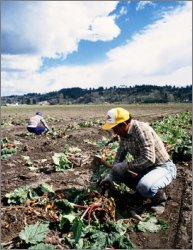Most people only think about rhubarb in terms of pies, crisps or crumbles, but there is much more to rhubarb than dessert.
This hardy, sour plant (rhubarb isn’t exactly a fruit or a vegetable — it’s the stem of a perennial plant) originated in Eastern Europe where it was enjoyed by the Germanics and has been used for medicinal purposes by the Chinese since 2700 B.C., according to the Washington Rhubarb Growers Association.
Rhubarb, which once grew along the banks of the ancient Volga River, literally means “barbarians of the Volga River,” and is also another word for a serious disagreement.
But there’s no need to fret over this unique edible plant … it’s healthy, tasty and incredibly easy to cook with (and grow!).







 The era of antibiotics, where deadly bacterial infections are knocked out completely in a matter of days, may be coming to an end soon, according to more than a handful of media headlines referring to a new paper in the Lancet Infectious Diseases medical journal. However, all hope is not lost.
The era of antibiotics, where deadly bacterial infections are knocked out completely in a matter of days, may be coming to an end soon, according to more than a handful of media headlines referring to a new paper in the Lancet Infectious Diseases medical journal. However, all hope is not lost.








